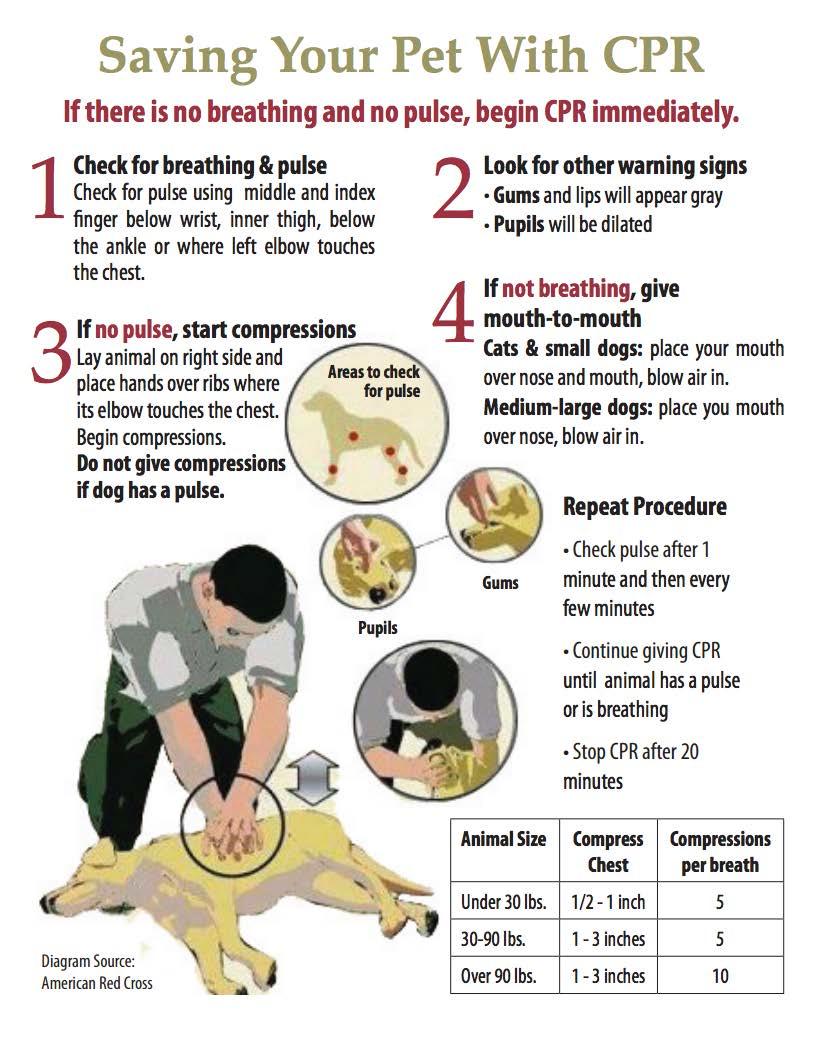Cardiopulmonary Resuscitation or CPR is a lifesaving technique useful in many emergencies, especially when your dog’s breathing or heartbeat has stopped. Heart attack, near drowning or electric shock are few of the occasions when a dog may require CPR. Unlike humans, the resuscitation is done only through the nose but mouth, and the CPR is only performed on unconscious animal to avoid the risk of being beaten.
CPR alone is unlikely to revive the heart. Its main purpose is to restore partial flow of oxygenated blood to the brain and heart. Its objective is to delay tissue death and to extend the brief window of opportunity for a successful resuscitation without permanent brain damage.
Common CPR technique for dogs:
Check for breathing and a heartbeat
Confirm if your pet is breathing or check their heartbeat. If they aren’t breathing or there is no sign of heartbeat, then immediately begin CPR with chest compression.
Give chest compression
CPR for Dogs below 30 Pounds (14 kg)
For cats, small dogs and deep chested dogs, place the heel of one of your hands directly over the pet’s heart and place your other hand directly over the first hand.
Compress the chest for one inch to one-quarter or one-third the width of the chest for a count of one and then let go for a count of one. Carry on at a rate of 100 compressions in a minute.
CPR for Dogs above 30 Pounds (14 kg)
Without bending both the elbows, press the rib cage in a downward motion.
Compress the chest for one-quarter to one-third the width of the chest for a count of one and then let go for a count of one. Carry on at a rate of 80 compressions per minute.
Make sure the chest comes back fully (recoils) before compressing again.
Give resuscitation
To provide resuscitation, gently close the dog’s mouth and extend the neck to open the airway. Cover their nose with your mouth and exhale until you see their chest rising. Give a second rescue breath.
Continue CPR
Continue giving CPR with a cycle of 30 chest compressions and 2 rescue breaths until your dog begins breathing again on its own.
Check again for breathing and a heartbeat
Briefly check for breathing and a heartbeat every 2 minutes.
If your dog doesn’t show any sign of improvement after 10 minutes, you can stop the procedure as it hasn’t proven successful.
